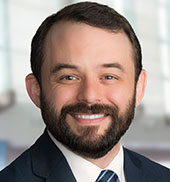On May 8, 2013, the U.S. Department of Health & Human Services, Office of Inspector General (OIG), issued an updated “Special Advisory Bulletin on the Effect of Exclusion from Participation in Federal Health Care Programs” (“Bulletin”), which replaces the 1999 version of this document. This Bulletin reiterates the OIG’s long standing position on the far reaching consequences of exclusions, emphasizes harsh sanctions the OIG may take if a provider bills Federal health care programs for services provided by or at the direction of excluded persons and advises providers to adopt best practices for exclusion screenings. The highlights of the Bulletin are described below:
Effect and scope of exclusion
The Bulletin makes abundantly clear that no Federal health care program dollars may be paid for services provided by an excluded person or at the medical direction or on the prescription of an excluded person. This payment prohibition applies to all methods of Federal health care program payment (e.g., prospective payment system, fee schedules, capitated payments, cost reports, etc.) and therefore affects all health care providers. This prohibition applies even if an excluded person furnishes services not separately billable to Federal health care programs (e.g., nursing services at a hospital, services of pharmacy technicians of inputting prescription information for pharmacy billing, etc.). The prohibition also reaches individuals providing administrative and management type services (e.g., information technology staff at a hospital, practice manager at a physician practice, accounting staff at a nursing home, etc.) as those services may be reimbursed by Federal health care programs indirectly. In addition, any items and services furnished at the medical direction or on the prescription of an excluded person are not payable when the person furnishing the items or services knows or should know of the exclusion (e.g., imaging centers and laboratories providing services based on orders of excluded persons). Given the broad sweep of the exclusion prohibition, from a practical standpoint, this means that it is essential for all health care providers to take measures to ensure that the provider does not employ or contract with any excluded individuals and does not provide any services based on a prescription or order of an excluded individual if the provider is reimbursed by any Federal health care program.
Frequency of screenings
While the health care industry has generally been aware of the need for exclusion screenings, the required frequency of screenings has generated many questions. In the Bulletin, the OIG takes the position that while exclusion screenings are not required by law, to minimize potential liability, the best practice is to screen employees and contractors upon hire and to perform monthly exclusion screenings thereafter. It is also noteworthy that for providers participating in Medicaid programs, monthly screenings of employees and contractors is generally a condition of Medicaid enrollment. Based on CMS direction in 2009, many state Medicaid programs have started to mandate monthly screenings for their participating providers.
Implications for health care industry
The Bulletin emphasizes the harsh penalties associated with employing or contracting with an excluded person. Specifically, if a provider arranges or contracts with a person the provider knows or should know is an excluded person, the provider may be subject to a Civil Monetary Penalty of up to $10,000 for each item or service furnished by the excluded person for which Federal program payment is sought, as well as damages of up to three times the amount claimed. The Bulletin makes clear that the billing provider is the one ultimately responsible for ensuring that no services are provided by or at the direction or on order of an excluded person. Given the harsh sanctions the OIG can pursue against those who have violated the exclusion prohibition and the significant financial exposure providers face for such violations, it is important that providers create and maintain robust excluded-person screening policies and procedures. It is also essential that contractual agreements entered into by providers impose clear exclusion screening obligations on vendors and require them to maintain documentation evidencing that exclusion screenings are performed.
Updated OIG Self-Disclosure Protocol
On a related note, just last month, the OIG also updated its Self-Disclosure Protocol and provided additional guidance to health care providers regarding self-disclosures of matters involving the employment of, or contracting with, individuals who are excluded persons. The OIG has indicated in public statements that approximately 40% of the matters self-disclosed to the OIG under the Self-Disclosure Protocol have involved excluded persons. The revised protocol includes a new section specifically addressing the type of information providers should submit for these matters and the manner in which the OIG will calculate damages. The protocol articulates the position the OIG has been taking in many settlements – namely, that for situations involving excluded individuals who provided items or services not separately billed to Federal health care programs (e.g., nurses, respiratory therapists), the OIG will use a proxy method for calculating damages. The OIG will calculate damages by taking the disclosing party’s total cost of employment or contracting during the exclusion (salary plus benefits) and multiplying this amount by the percentage of the party’s payor mix, which represents Federal health care program revenue. By contrast, for situations involving excluded individuals who provided items or services separately billed to Federal health care programs (e.g., physician), the damages will be calculated based on the total amounts paid by the Federal health care programs for such items or services.
If you have any questions regarding the exclusion screening process, would like any assistance with developing policies and procedures related to exclusion screenings or believe you have a matter involving an excluded person that might require disclosure to the OIG, please contact your Thompson Coburn attorney, or any of the attorneys in our Health Care practice.


















